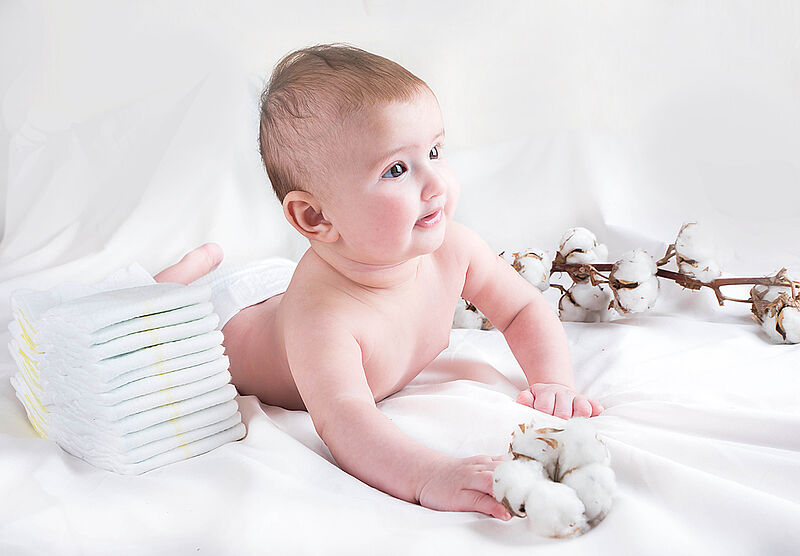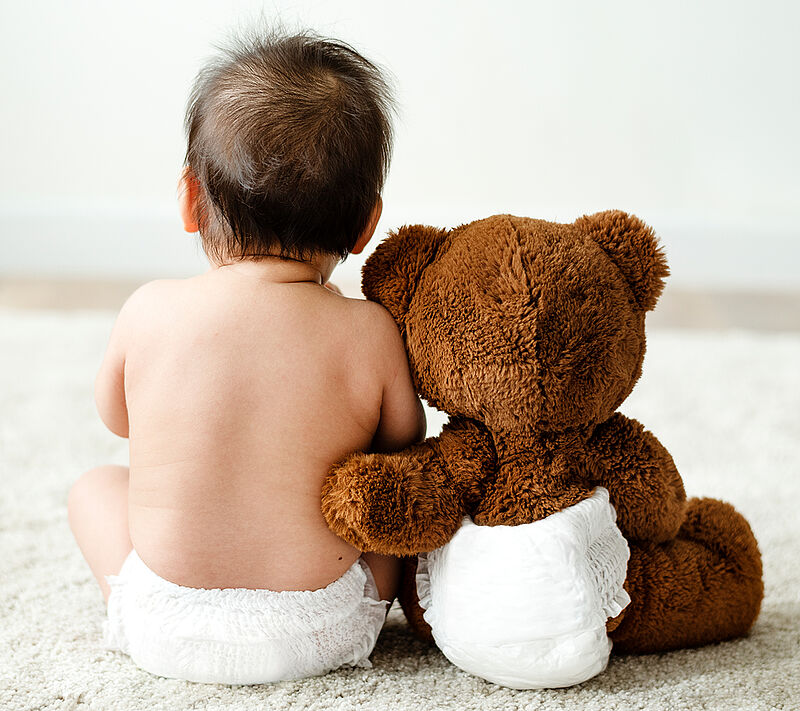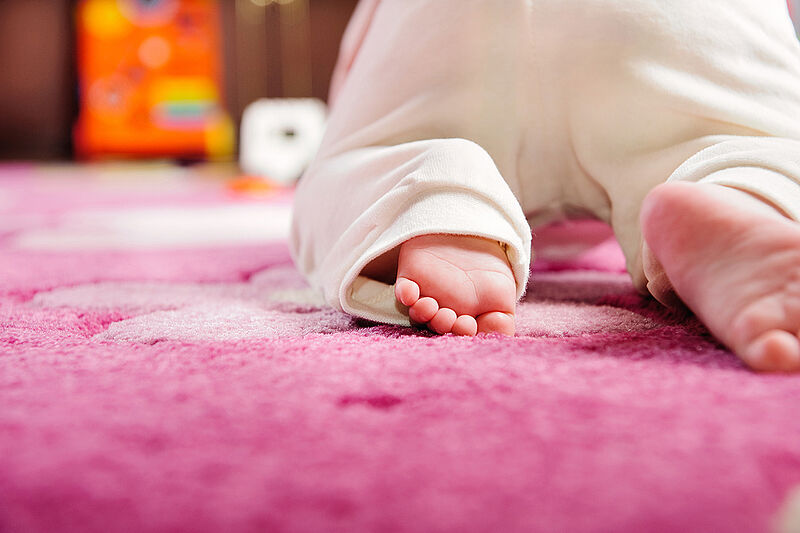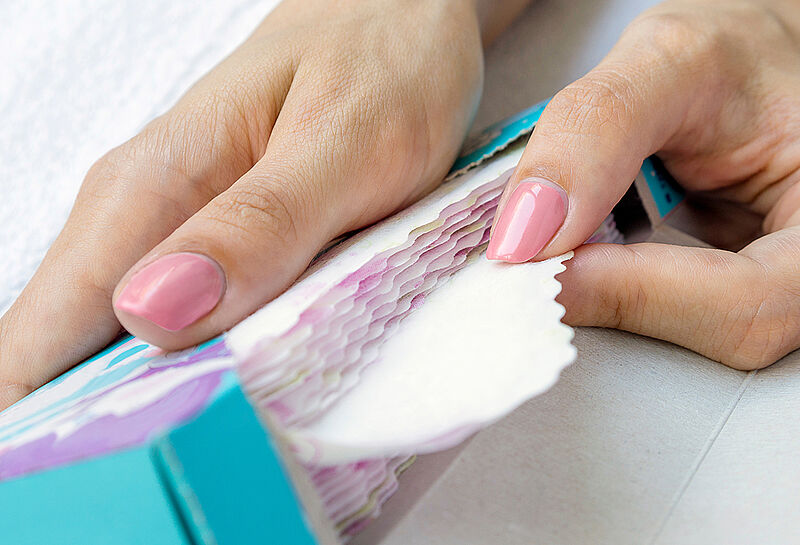Not just kids stuff
Nonwovens in the hygiene field can be baby diapers, women's panty liners or incontinence products. Requirements for hygiene materials are depending on their purpose. Among others this includes softness, strength, air permeability, skin-friendliness, options for finishing with lotions and fluid management.
Diapers: a high-tech product
A good diaper moves with the body, does not irritate the skin and keeps dry as long as possible. In order to fulfill these tasks, four different layers with special functions work together.
Three of the four layers can be produced on Truetzschler Nonwovens lines: the top sheet, the absorption and distribution layer and the back sheet.
Top sheets - nonwovens with direct skin contact
As innnermost layer, the top sheet is in direct contact with the skin. That’s why it has to be as soft and skin-friendly as possible. It transports moisture away from the skin and into the inside of the diaper. Nonwoven weights vary depending on the process and are between 14 and 25 grams per square meter.
Top sheets can be produced in three different ways:
- calendered spunbonds are very light and strong - but can stick to the skin. The polymer-based materials are extruded from polypropylene and have a chemical finishing.
- very soft top sheets are made from carded webs using the through-air thermobonding process on Truetzschler lines. Finest bicomponent fibers melt in a heated Omega oven and bond the fibers in the surrounding to form a firm, yet soft and voluminous nonwoven fabric.
- A new development are top sheets from carded and hydroentangled cotton nonwovens produced on a Truetzschler carding/spunlacing line. If unbleached organic cotton is used, the result is a breathable, environmentally and skin-friendly cotton top sheet.
Aquisition and distribution layer (ADL)
ADL is the second layer in a diaper. It ensures even distribution of liquids so that the diaper's absorbent core will not be overloaded at certain point.
Truetzschler Nonwovens offer two technologies for manufacturing the acquisition and distribution layer. These two processes can even be flexibly combined in one production line:
- the carding/thermobonding process works with bicomponent fibers. It is similar to top sheet production but uses coarser fibers to melt in a drum thermobond oven or
- the chemical consolidation of a carded web made of fibers of different fineness with a chemical binder.
Core and back sheet
The ADL layer is followed by the core, which usually consists of cellulosic fluff pulp with embedded superabsorbent particles. In contact with liquids, they swell up like a gel and bind the liquid in the core.
The diaper's outer layer is called the back sheet. It usually consists of a water-impermeable film, which is laminated with thin, soft nonwoven material to protect the film. A calendered spunbonded fabric or a hydroentangled carded nonwoven can be used.
Femcare: panty liners and sanitary towels
Femcare products also consist of different layers. The top sheet, distribution layer, core and waterproof back sheet can also be found. The top sheet is particularly interesting for Truetzschler Nonwovens, as natural products are in demand in this segment and are more and more made from cotton nonwovens.
Manufacturing cotton top sheets
A conventional top sheet is spunbonded and calendered for solidifying the polypropylene fibers.
Since the top sheet is right next to the skin, the new trend towards natural fibers such as cotton is understandable. New hydroentangled top sheets are made of carded cotton webs. They are soft, breathable, minimize skin irritation - and are mare on Truetzschler Nonwovens' cotton lines.



